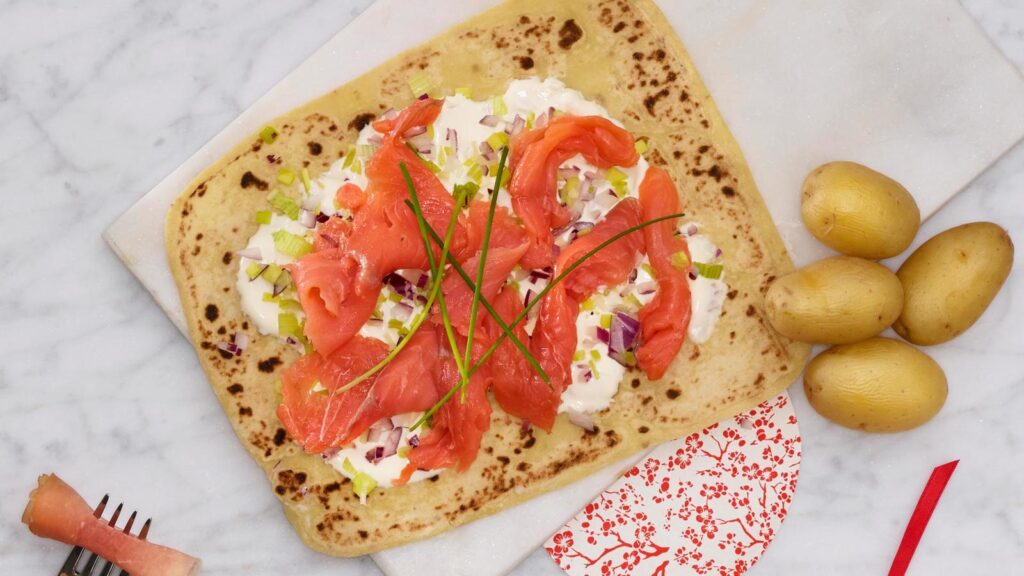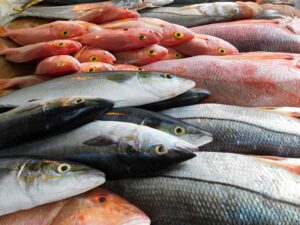Introduction
Food waste is a global issue, and Norway is no exception. Reducing food waste is not only an environmentally responsible choice but also a money-saving one. It’s a win-win situation for both your wallet and the planet. By minimizing food waste, you can help reduce greenhouse gas emissions, conserve resources, and alleviate pressure on ecosystems.
In this article, we will first introduce the adverse effects of wasted fish on the environment in Norway. Then, we will explore some practical and easy-to-implement fish conservation methods that can be done at home. Next, for common Norwegian fish dishes, we will discuss the risks of food waste and provide solutions. Finally, we will introduce several sustainable seafood options. We hope that this article can help reduce waste and contribute to a sustainable future.
The Environmental Impact of Wasted Fish in Norway
Norway’s fishing industry is a vital part of its culture and economy. With a rich history of fishing, many people depend on this industry for their livelihoods and income. Therefore, responsible fish conservation is crucial to maintaining the delicate balance of marine ecosystems.
When it comes to the environmental impact of wasted fish, the consequences are profound. Every piece of fish or fish head that ends up in the trash represents a missed opportunity for positive change. Here, we delve deeper into how wasted fish can harm various aspects of our planet:
Resource Depletion: One of the most significant issues associated with wasted fish is the depletion of precious marine resources. Due to overfishing and unsustainable fishing methods, fish populations worldwide are under tremendous pressure. When we discard fish, we are essentially wasting the resources used to catch and process them. This exacerbates the depletion of fish resources and adds extra pressure to the world’s oceans.
Energy and Water Footprint: The fishing industry is energy-intensive. The boats, equipment, and processes involved in fish capture, processing, and transportation consume significant amounts of energy and water. When we waste fish, we’re not only discarding food but also the resources invested in its production. The carbon footprint of wasted fish is substantial, contributing to greenhouse gas emissions and climate change.
Methane Emissions: Fish waste doesn’t decompose harmlessly in landfills; it generates methane, a potent greenhouse gas that is more effective at trapping heat than carbon dioxide. When fish and fish byproducts decompose anaerobically (in the absence of oxygen), they release methane into the atmosphere. This further exacerbates global warming, making wasted fish a direct contributor to climate change.
Ecosystem Impact: In addition to the direct impact on fisheries, wasted fish can disrupt marine ecosystems. When fish carcasses are discarded in the sea or coastal areas, they attract scavengers, altering the dynamics between predators and prey. This can lead to cascading effects throughout the ecosystem, potentially harming species that rely on these resources.
Loss of Biodiversity: Overfishing and bycatch are already threatening marine biodiversity. By wasting fish, we not only exacerbate these issues but also disregard the delicate balance necessary to maintain diverse marine life. Sustainable fishing practices and responsible consumption are crucial for protecting rich oceanic species.
Economic Losses: On a broader scale, wasted fish can have economic repercussions. The fishing industry is a critical sector for many countries, providing livelihoods for countless people. When fish is wasted, it leads to losses in income and employment opportunities throughout the supply chain, affecting not only fishermen but also processors, distributors, and local communities.
Consumer Costs: Wasted fish can also impact consumers’ wallets. As the demand for fish remains high, inefficient supply chains and excessive waste can drive up prices. By minimizing waste, consumers can alleviate the financial burden of expensive seafood.
Practical Home Conservation Methods for fish: Easy-to-Implement Techniques
In order to minimize food waste, especially when it comes to fish and fish leftovers, practical conservation methods are crucial. These techniques not only help reduce waste but also enhance your cooking skills and save money. Let’s delve into these methods in more detail:
A. Proper Storage Techniques
Effective fish conservation begins with proper storage. Here are some key points to remember:
- Temperature Matters: Store fish in the coldest part of your refrigerator, typically the lower shelves. The ideal temperature range for storing fish is 32°F to 38°F (0°C to 3°C). This helps slow down bacterial growth and maintains freshness.
- Use Airtight Containers: Invest in airtight containers or vacuum-sealed bags to prevent air from coming into contact with the fish. Exposure to oxygen can lead to freezer burn or spoilage.
- Label and Date: Don’t forget to label your fish containers with the storage date. This ensures that you use the oldest fish first, following the first-in, first-out method.
- Freeze if Not Using Soon: If you don’t plan to consume the fish within a day or two, freeze it. Properly packaged fish can be stored in the freezer for several months.
- Avoid Overcrowding: Don’t pack fish tightly into containers or freezer bags. Overcrowding can lead to uneven freezing and potential quality loss.
B. Creative Meal Planning
Effective meal planning can change the game when it comes to reducing food waste:
- Check Your Stock: Before heading to the store, take stock of what you already have in your fridge and freezer, including any leftover fish. This can help you plan meals around existing ingredients.
- Plan for Leftovers: Incorporate leftover fish into your meal plans. Consider recipes like fish tacos, fish stew, or fish stir-fry that can easily accommodate various types of fish.
- Portion Control: When preparing fish, portion it based on your family’s needs to minimize leftovers. If you do end up with extras, store them properly for future use.
Proper freezing and thawing are crucial for preserving the quality of fish:
- Wrap and Seal: When freezing fish, make sure to wrap it tightly to prevent freezer burn. Vacuum-sealed bags work well, or you can use double layers of plastic wrap followed by aluminum foil.
- Slow Thawing: When you need to use frozen fish, transfer it to the refrigerator and allow it to thaw slowly. This may take several hours to overnight, depending on the size of the fish. Avoid thawing fish at room temperature, as this can promote bacterial growth.
- Cook from Frozen: If you’re in a hurry, you can cook fish directly from frozen. Just adjust the cooking time slightly to accommodate the frozen state.
Don’t discard fish bones, fish heads, or fish scraps. Instead, transform them into delicious broths or stocks:
- Collect Waste: When preparing fish, collect any waste such as bones, fish heads, and trimmings. These are a treasure trove of flavor.
- Make Broths: To create fish broths, boil the leftovers with water, aromatic vegetables, and seasonings. After straining, you’ll have a versatile liquid that can be used as a base for soups, stews, and sauces.
- Seafood Soups: Fish broth is perfect for making tasty seafood soups, such as bouillabaisse or seafood chowder. It enhances the depth and complexity of dishes while maximizing minimal waste.
Traditional Norwegian Fish Dishes: A Source of Food Waste
Now that you have a better understanding of how to store fish leftovers, let’s dive into the realm of traditional Norwegian fish dishes. These dishes are renowned for their rich flavors and cultural significance, but they often come with unintended consequences—food waste. Let’s explore some of the most beloved traditional dishes and why they can lead to an excess of fish that might go to waste if not managed carefully.
A. Lutefisk: A Slippery Challenge

The Essence of Lutefisk:
Lutefisk is a unique dish, often associated with Scandinavian countries, including Norway. It begins with dried whitefish, typically cod or lingcod. These fish are dried to preserve them and reduce moisture content, making them suitable for long-term storage in the days before modern refrigeration. To prepare lutefisk, the dried fish is rehydrated in a lye solution, then soaked in water to remove the caustic lye taste, leaving behind tender, translucent fish with a distinctive texture.
The Slippery Challenge:
Lutefisk’s unique preparation process is part of its charm, but it can also present a challenge when it comes to handling leftovers and preventing food waste:
Hydration Sensitivity: Lutefisk can be sensitive to moisture. If not rehydrated properly or if it absorbs too much moisture during storage, it can become overly mushy or disintegrate. This sensitivity can lead to unintentional waste if the lutefisk isn’t handled with care.
Batch Cooking: Traditional lutefisk recipes often yield larger portions, and it’s easy to prepare more than needed. When making lutefisk for a special occasion or a family gathering, it’s crucial to estimate portions accurately to avoid having excess that may go to waste.
Unfamiliarity: For those new to lutefisk or not accustomed to its unique texture and taste, there might be a reluctance to finish the dish. This can result in leftover lutefisk that can be challenging to repurpose if not prepared correctly.
Responsible Handling of Lutefisk:
Reheating Carefully: If you have leftover lutefisk, reheat it gently. Avoid overheating, as this can cause the lutefisk to become mushy. Steaming or microwaving with a bit of water to add moisture is often a better choice than boiling.
Creative Leftover Recipes: If you find yourself with leftover lutefisk, get creative in the kitchen. Transform it into lutefisk casseroles, fish pies, or incorporate it into fish soups and stews. Experimenting with flavors can breathe new life into lutefisk leftovers.
B. Rakfisk:Fermented Flavor with a Catch

The Essence of Rakfisk:
Rakfisk is a preserved fish dish made by fermenting trout or char. To prepare rakfisk, the fish is gutted and cleaned before being cured with a mix of salt and sugar. After curing, the fish is placed in wooden barrels and allowed to ferment for several weeks or even months. The result is a dish with a pungent aroma, a complex flavor profile, and a smooth, almost creamy texture.
The Fermented Challenge:
Rakfisk’s unique preparation process and strong flavor contribute to its challenges when it comes to food waste:
Long Fermentation: The extended fermentation period means that rakfisk production often involves preparing larger quantities of fish at once. This can lead to more rakfisk than can be consumed before it reaches its peak fermentation.
Acquired Taste: The intense flavor and aroma of rakfisk can be an acquired taste. Not everyone is immediately fond of it, which can result in leftover portions that may be challenging to use if not managed properly.
Storage Sensitivity: Rakfisk is sensitive to storage conditions. Mishandling or improper storage can lead to spoilage or loss of its unique qualities.
Responsible Handling of Rakfisk:
To minimize food waste while enjoying rakfisk, consider the following tips:
Acclimating to the Flavor: If you or your guests are new to rakfisk or find its flavor challenging, consider serving it in smaller quantities alongside other dishes. Over time, individuals may acquire a taste for its unique qualities.
Storage Savvy: Rakfisk should be stored in a cool, dark place in an airtight container or vacuum-sealed bag to maintain its quality. Keep an eye on its condition, checking for any signs of spoilage or over-fermentation.
Creative Repurposing: If you have leftover rakfisk, get creative in the kitchen. Utilize it in traditional Norwegian recipes like rakfisk salad or rakfisk omelets. Its distinct flavor can also add depth to sauces and spreads.
Frozen Preservation: If you anticipate a surplus of rakfisk, you can freeze portions for later use. Freezing can help preserve its flavor and texture for an extended period.
C. Gravlaks:A Cured Conundrum

The Essence of Gravlaks:
Gravlaks, also known as gravad lax or gravlax, is a dish primarily made from salmon. The name “gravlaks” translates to “buried salmon,” harkening back to its traditional method of preparation. To make gravlaks, a fresh salmon fillet is cured with a mixture of salt, sugar, and fresh dill. This curing process takes several days, during which the salmon absorbs the flavors of the seasoning, resulting in a delicate, silky texture and a subtly herbaceous taste.
A Cured Conundrum:
Gravlaks, with its meticulous preparation and nuanced flavors, presents unique challenges in the context of food waste:
Curing Quantities: Gravlaks is often made in larger quantities to ensure there’s enough to serve guests or for special occasions. Preparing a substantial amount of gravlaks can lead to leftovers that may be challenging to consume before they lose their freshness.
Flavor Complexity: Just like the Rakfisk mentioned above, Gravlaks possesses a distinct flavor profile that can be an acquired taste. Some individuals may find its taste intense or unfamiliar, which can result in uneaten portions.
Storage Sensitivity: Gravlaks requires careful storage. Mishandling or improper storage can lead to spoilage or degradation of its unique qualities.
Responsible Handling of Gravlaks:
To minimize food waste while indulging in the exquisite flavors of gravlaks, consider the following tips:
Thoughtful Portions: When preparing gravlaks, estimate portion sizes based on your guests’ preferences. Aim to serve an amount that can be comfortably consumed during the meal to reduce the likelihood of leftovers.
Pairing with Complementary Flavors: Gravlaks pairs wonderfully with various accompaniments. Serving it with a diverse range of toppings and sides, such as mustard sauce, pickled vegetables, or fresh bread, can enhance the dining experience and encourage responsible consumption.
Storage Expertise: If you do find yourself with leftover gravlaks, store it properly to maintain its quality. Wrap it tightly in plastic wrap or foil and place it in an airtight container in the refrigerator.
Creative Repurposing: Leftover gravlaks can be repurposed creatively. Consider incorporating it into salads, scrambled eggs, or pasta dishes to utilize its distinct flavor.
D. Smoked Fish Varieties: A Taste of Tradition

The Essence of Smoked Fish:
Smoking fish is an ancient preservation method that has been practiced for centuries in Norway and other regions with access to abundant seafood. The process typically involves curing fish with salt, then subjecting it to a slow, controlled smoking process. This infuses the fish with a smoky aroma and a savory flavor, preserving it for extended periods.
A Taste of Tradition:
Smoked fish varieties are not only a source of culinary delight but also present challenges when it comes to food waste:
Large Quantities: Smoking fish often involves preparing sizable batches, especially during periods of abundant catches. This can result in more smoked fish than can be consumed before it starts to lose its freshness.
Unique Flavor Profiles: Though smoked favor food is very popular nowadays. But still, smoked fish has a distinct and acquired taste. Not everyone may be immediately drawn to its smoky nuances, leading to leftover portions that may go uneaten.
Responsible Handling of Smoked Fish Varieties:
To savor the traditions of smoked fish while minimizing food waste, consider the following tips:
Pair with Complementary Flavors: Smoked fish pairs wonderfully with various accompaniments, such as cream cheese, crackers, capers, or fresh herbs. Providing a variety of pairings can enhance the dining experience and encourage responsible consumption.
Creative Repurposing: Leftover smoked fish can be repurposed creatively. Consider incorporating it into omelets, quiches, or pasta dishes to utilize its smoky flavor.
Sharing the Tradition: Smoked fish is often enjoyed at gatherings or special occasions. If you have more smoked fish than you can consume, consider sharing it with friends or family who appreciate this classic Scandinavian treat.
Freezing for Preservation: To extend the shelf life of smoked fish, freeze portions for later use. Wrap them tightly in plastic wrap and aluminum foil before freezing to maintain their quality.
Choosing sustainable seafood is a proactive step in reducing food waste at its source. Norway’s close connection to the oceans and its fisheries means that consumer choices play a crucial role in ensuring the long-term health of marine ecosystems.
Below, I introduce several types of sustainable seafood:
Wild Alaskan Salmon: Alaskan salmon is often considered a sustainable choice. Alaska’s fisheries are well-managed, and strict regulations help protect salmon populations.
MSC-Certified Cod: Cod from MSC-certified fisheries is a good option. Cod is highly popular in Norwegian cuisine, and opting for sustainably sourced cod supports responsible fishing practices.
Mussels and Clams: Farmed mussels and clams are typically considered sustainable as they have minimal environmental impact and are filter feeders, helping to improve water quality.
Arctic Char: This species, similar to salmon and trout, is often farmed using sustainable practices, making it a good choice for seafood enthusiasts.
Herring: Herring from well-managed fisheries is a sustainable and nutritionally rich choice. It’s also a staple in Scandinavian cuisine.
Conclusion: Achieving a Sustainable Future Through Fish Conservation
Minimizing food waste, especially in a country closely connected to the oceans like Norway, is not only a responsible practice but also an opportunity for individuals to contribute to a more sustainable future. By adopting these effective home conservation methods, you can play a significant role in reducing fish waste in Norway and contribute to a more sustainable future for our oceans and the entire planet.
FAQs
Q1. How long can fish be stored in the refrigerator?
Fish can be safely stored in the refrigerator for up to 3-6 months, depending on the type of fish and the extent of packaging and sealing.
Q2. Can I cook frozen fish without thawing it first?
Yes, you can cook frozen fish without thawing it first. However, the cooking time may be slightly longer, so adjust your cooking time accordingly.
Q3. How should I handle fish bones and scraps?
Fish bones and scraps can be used to make fish stock or broth, adding flavor to soups, stews, and sauces. Simply simmer them with water, vegetables, and herbs to create a delicious base.
Q4. How can I determine if the fish I purchase is from a sustainable source?
Look for eco-certifications, such as the MSC label on packaging. Additionally, inquire with your fishmonger about the source of the fish and their sustainability practices.



























